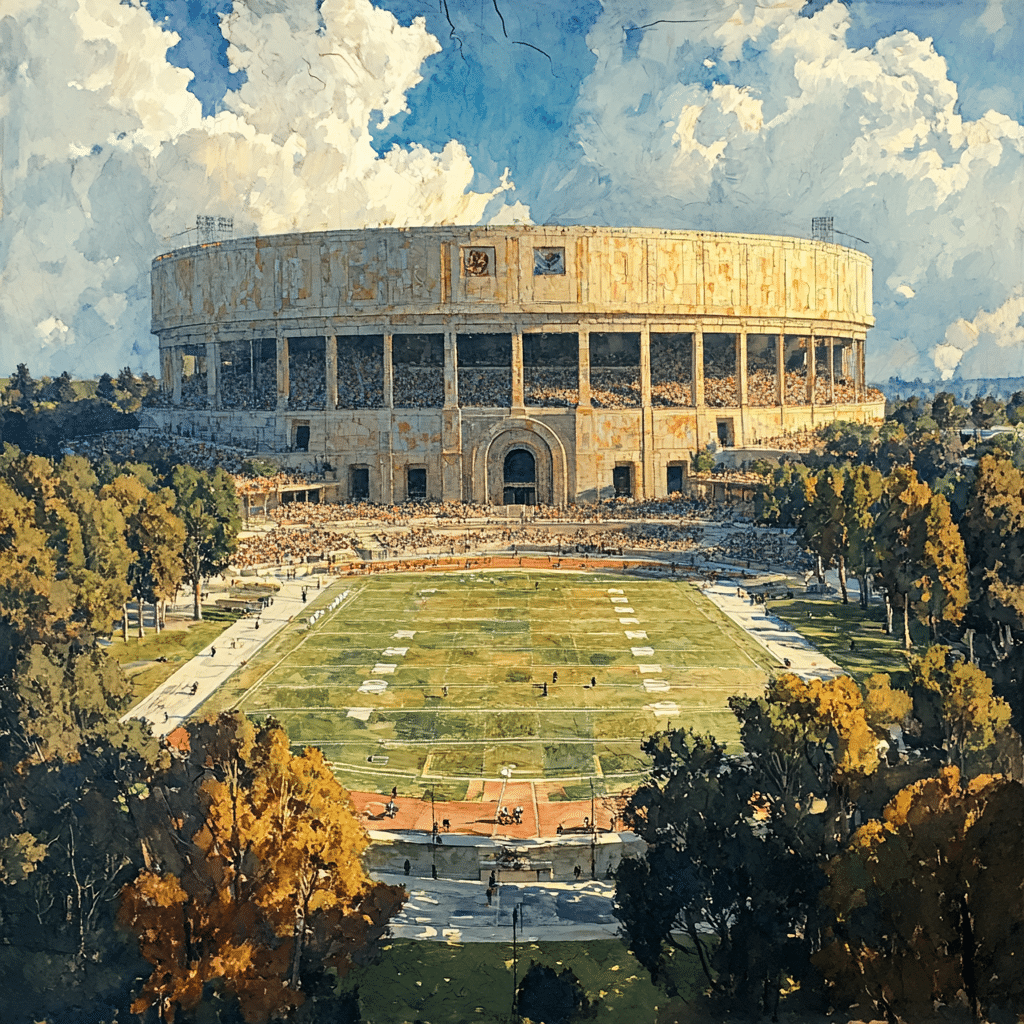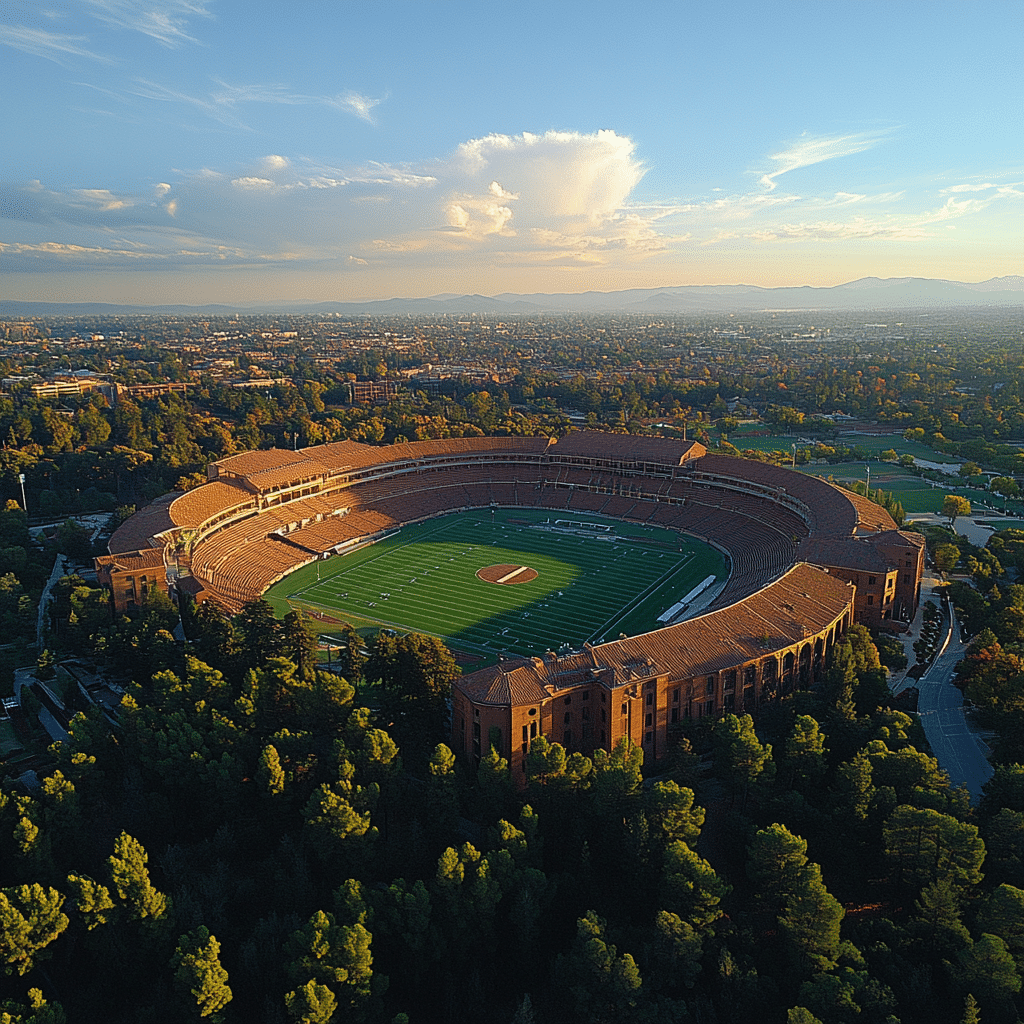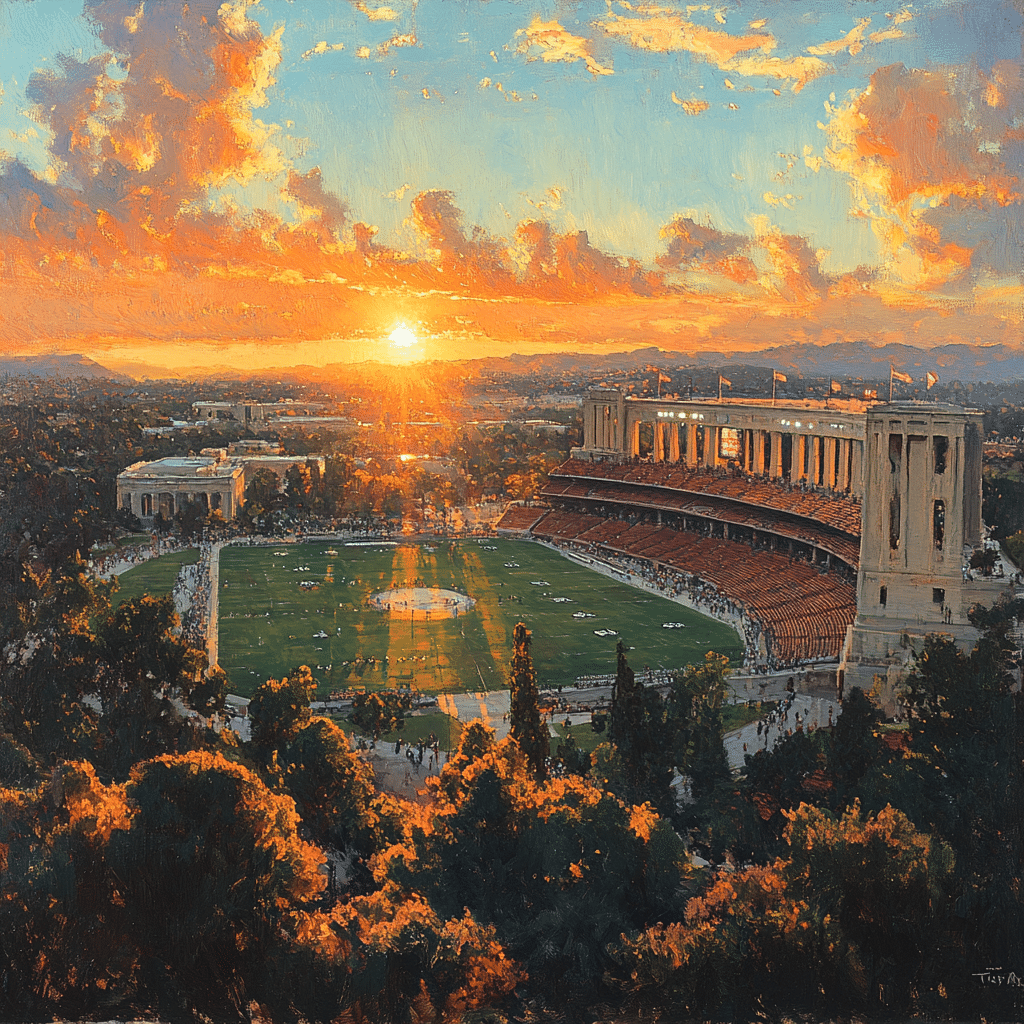Stanford Stadium, located in the picturesque setting of Stanford University in California, is a testament to innovative design and sustainable architecture. Since its impressive reconstruction in 2006, this stadium has not only served as a home for the Stanford Cardinal football team but has also become a magnet for fans seeking a unique and comfortable experience. With a cozy seating capacity of 50,424, this stadium provides an intimate atmosphere for watching games, setting it apart from larger venues like Beaver Stadium and Veterans Memorial Coliseum. Let’s dive into the seven features that make Stanford Stadium a standout among major sports venues.
7 Features That Make Stanford Stadium Stand Out Among Major Venues

1. Sustainable Design Innovations
One of the most commendable features of Stanford Stadium is its commitment to sustainability. Built with eco-friendly materials, the stadium includes energy-efficient systems for lighting and HVAC. Unlike other older venues like Nassau Coliseum, which has faced struggles with environmental sustainability, Stanford Stadium showcases what modern architecture should strive for. By making these choices, it emphasizes a balanced relationship between architecture and nature while setting a standard many aim to match.
2. Scenic Views and Natural Integration
Nestled in the foothills of the Santa Cruz Mountains, Stanford Stadium offers breathtaking views that elevate the spectator experience. The stadium is designed to integrate seamlessly with its natural surroundings, allowing fans to soak in the beauty while cheering for their team. This picturesque backdrop rivals the stunning vistas at Husky Stadium, making every game a visual treat. It’s not just watching a game; it’s about enjoying a captivating landscape, which is a rare find in sports venues.
3. Superior Fan Experience
When it comes to comfort, Stanford Stadium knows what fans want. The seating is noticeably wider, with ample legroom and improved sightlines, allowing everyone to enjoy the action. This thoughtful design stands in contrast to facilities like Akron Stadium, where cramped seating has become a complaint among viewers. At Stanford, every seat feels like a premium experience, highlighting a commitment to enhancing fan engagement.
4. State-of-the-Art Technology
Stanford Stadium shines with its state-of-the-art technological advancements, featuring stunning high-definition video displays and impressive scoreboards. This innovative integration keeps fans engaged during games and enhances live broadcasts, ensuring they catch every moment of action. While venues like Beaver Stadium are catching up with technology enhancements, Stanford has already established itself as a leader, paving the way for future array installations in stadiums nationwide.
5. Versatile Multi-Use Capability
Unlike specialized venues like Sanford Stadium, which primarily hosts college football, Stanford Stadium’s design accommodates a variety of events. From exhilarating concerts to community gatherings, this multi-use capability allows it to engage audiences well beyond the football season. This adaptive quality enriches the local cultural landscape, transforming the stadium into a vibrant community hub throughout the year.
6. Rich Historical Context
Preserving its historical essence is key to what makes Stanford Stadium so special. While undergoing renovations, it has retained a narrative that resonates with its visitors. This commitment to historical preservation situates it alongside venues like Veterans Memorial Coliseum, which is steeped in rich sports history. The blend of the past with modern updates creates a unique storytelling element, enriching each visit for fans.
7. Exceptional Accessibility
Stanford Stadium places a strong emphasis on accessibility, featuring ample options for fans with disabilities. Its well-thought-out layout guarantees easy access to facilities, seating, and amenities, creating a welcoming environment for all. This attention to inclusivity sets it apart from arenas like Nassau Coliseum, which are still working toward better accessibility. Stanford’s approach serves as an essential blueprint for other venues looking to make significant improvements.

A New Era of Stadium Design
As we reflect on Stanford Stadium’s impressive architectural characteristics, it’s evident that this venue spearheads a new era for stadium design. Other venues are beginning to realize the importance of sustainable practices, enhancing fan experience, and integrating technology into their designs. With its blend of environmental consciousness and fan comfort, Stanford Stadium not only captivates sports enthusiasts but also influences the future of sports venues worldwide.
Innovative aspects of the Stanford Stadium experience redefine how communities engage with sports. As we navigate through the 2020s, it’s clear that many stadiums will follow this model, advocating for greener, more inclusive, and fan-focused environments. There’s a revolution underway, and Stanford Stadium stands at the forefront, demonstrating how thoughtful design can significantly reshape the sports landscape. If you’re looking for a place that combines breathtaking views, modern amenities, and a rich history, it’s time to plan a visit to Stanford Stadium, where innovation meets tradition.
Stanford Stadium: A Marvel of Design and Functionality
Architectural Treasures
Stanford Stadium isn’t just a venue for exhilarating football games; it’s a work of art! Originally opened in 1921 and renovated in 2006, this iconic structure boasts a seating capacity of around 50,000. Combining modern touches with historical charm makes it a favorite among fans. Interestingly, its design is inspired by the classical Greek amphitheater, which sought to amplify the voices of performers. It reminds us that venues like the Alliant Energy center aim to create remarkable experiences, too. If you’re a fan of exquisite interiors, you might want to check out spots like Venetian Nail spa for some pampering before or after a game!
A Place of Legends
You’ll be amazed to learn that Stanford Stadium is home to several unforgettable moments in sports history. The 1992 “The Big Game” between Stanford and California saw a last-minute touchdown that left fans in shock, showcasing the magical atmosphere that envelops the venue. Beyond football, the stadium has hosted various events, including concerts featuring legends like Bruce Springsteen. With its spacious layout and acoustics, it’s a prime choice for big acts—similar to the popular Cpkc Stadium which also attracts massive crowds. Just like Dominique Fishback’s career, which keeps rising in films and shows, Stanford Stadium continues to make headlines!
Beyond the Field
Did you know that the design of Stanford Stadium aims for sustainability? Efforts to reduce its carbon footprint include efficient landscaping and minimized water use. As environmental awareness grows, even venues like Corinthians Fc are exploring greener options. Another fascinating tidbit involves the stadium’s famous “Canopy, which provides shade for fans, making watching games a lot more comfortable. While cheering on your favorite team, take a moment to appreciate these thoughtful touches. And speaking of excitement, have you seen the show Asobi Asobase? It’s got that same electric feel with smart humor and unexpected twists, much like a thrilling game at Stanford Stadium!
Stanford Stadium truly captivates visitors with its rich history, innovative design, and fan-friendly features. It’s a place where moments become memories, making it a must-visit for any sports enthusiast. So the next time you’re at a game, just think about all the legends that have graced that field and the incredible experiences waiting to unfold!

What happened to Stanford Stadium?
Stanford Stadium was completely rebuilt after the 2005 season, transforming it into a dual-deck concrete facility that has no track. The new structure seats 50,424 fans.
Why is Stanford’s Stadium called the Farm?
The name “The Farm” comes from Stanford’s origins as a horse farm that bred champion racehorses before it became a university. The barn from that time still operates today.
Is alcohol sold at Stanford Stadium?
Yes, alcohol is sold at Stanford Stadium, but it’s only available to folks who are 21 and older. Be sure to check out the specific alcohol policies when you’re there.
How big is Stanford’s Stadium?
Stanford’s Stadium has a cozy seating capacity of 50,424, which is a drop from the previous 85,000. It used to be the largest privately owned college football facility in the country.
Why do people who live near Stanford call it the farm?
People around Stanford call it “The Farm” as a nod to the university’s history as a horse farm. It’s a term that has stuck around and is used with affection.
Do the Cardinals own State Farm Stadium?
No, the Cardinals don’t own State Farm Stadium. The name is just a naming rights deal, and the stadium is home to the Arizona Cardinals of the NFL.
How much is beer at Sanford Stadium?
Beer prices at Stanford Stadium can vary, but expect to pay around $10 for a pint. It’s always good to check the latest prices on game day.
Are water bottles allowed in Stanford Stadium?
You’re allowed to bring empty water bottles into Stanford Stadium, which is great for staying hydrated during events. Just make sure they fit the rules of what you can carry inside.
What food is being served at Sanford Stadium in 2024?
In 2024, you can find a variety of food options at Stanford Stadium, including local favorites and classic stadium snacks. Expect everything from burgers to healthier choices.
What is the nickname of the Stanford Stadium?
The nickname of Stanford Stadium is “The Farm,” reflecting both the history of the area and the school’s ties to agriculture.
Is Sanford Stadium grass or turf?
Stanford Stadium features a natural grass playing field, giving it a classic look and feel that many fans appreciate for the games.
Why was the Super Bowl played at Stanford Stadium?
The Super Bowl was played at Stanford Stadium in the past because it was a large venue that could accommodate a massive crowd, showcasing college-level athleticism in a unique setting.

























